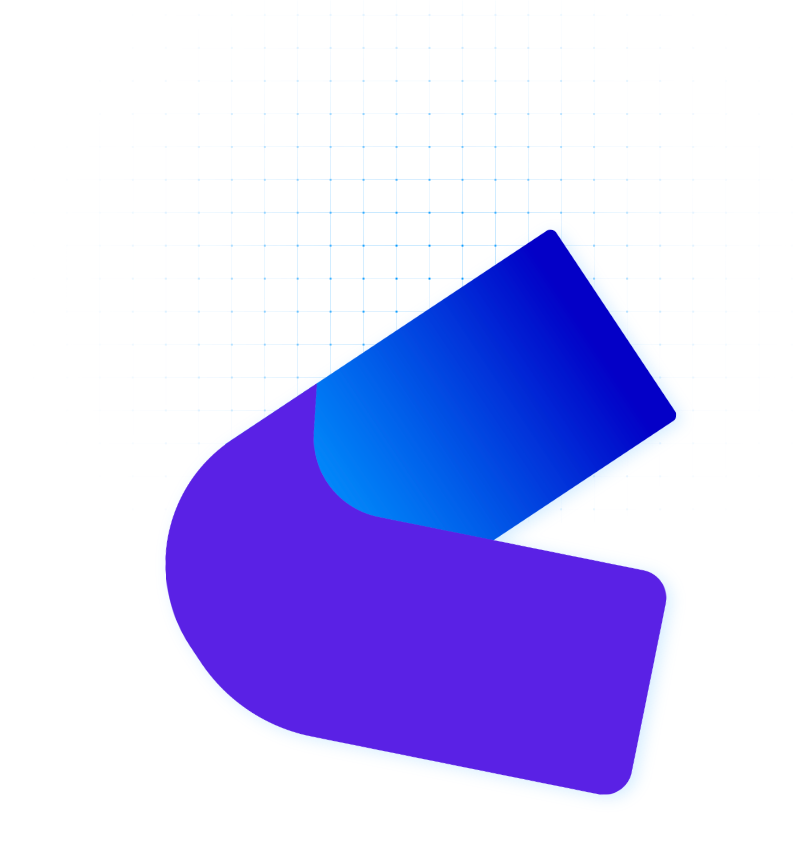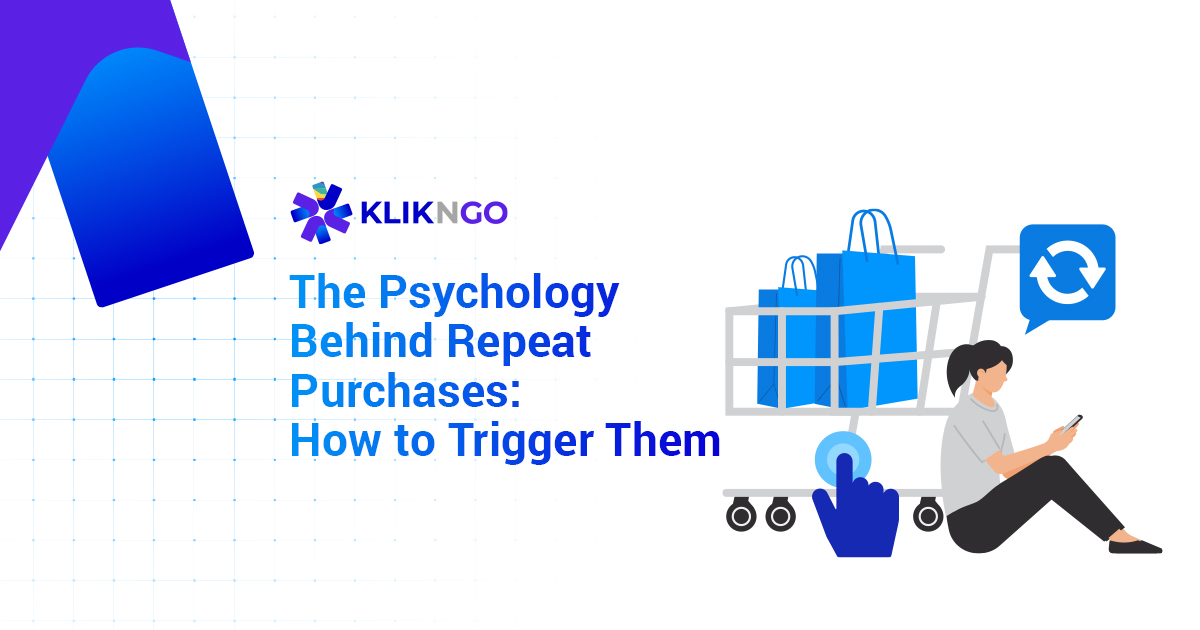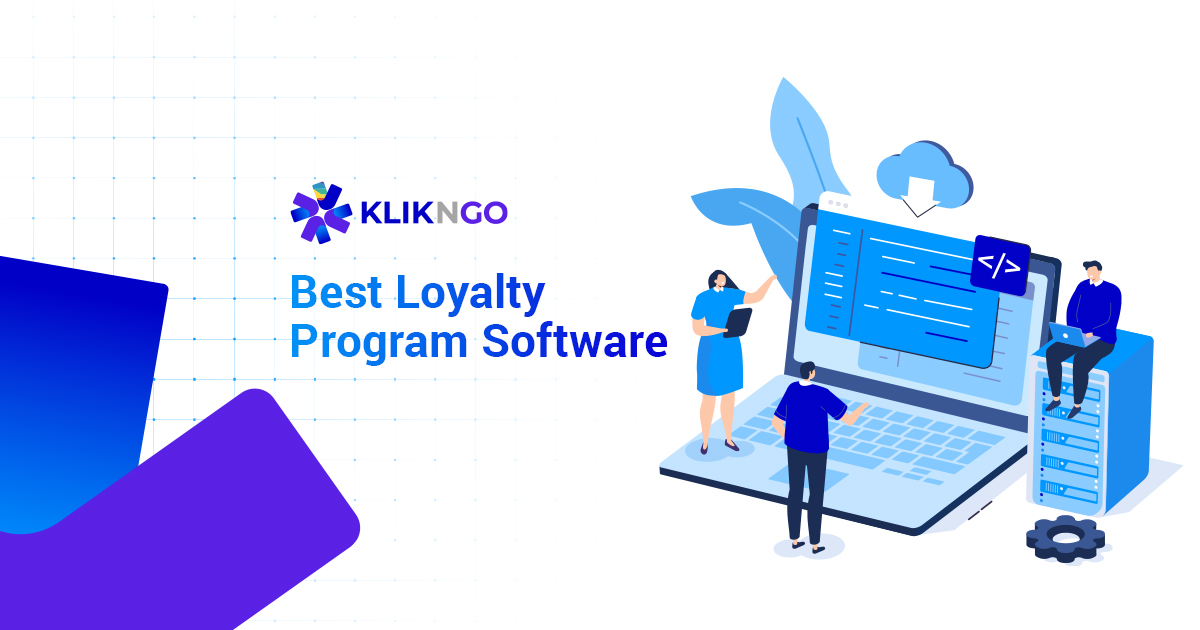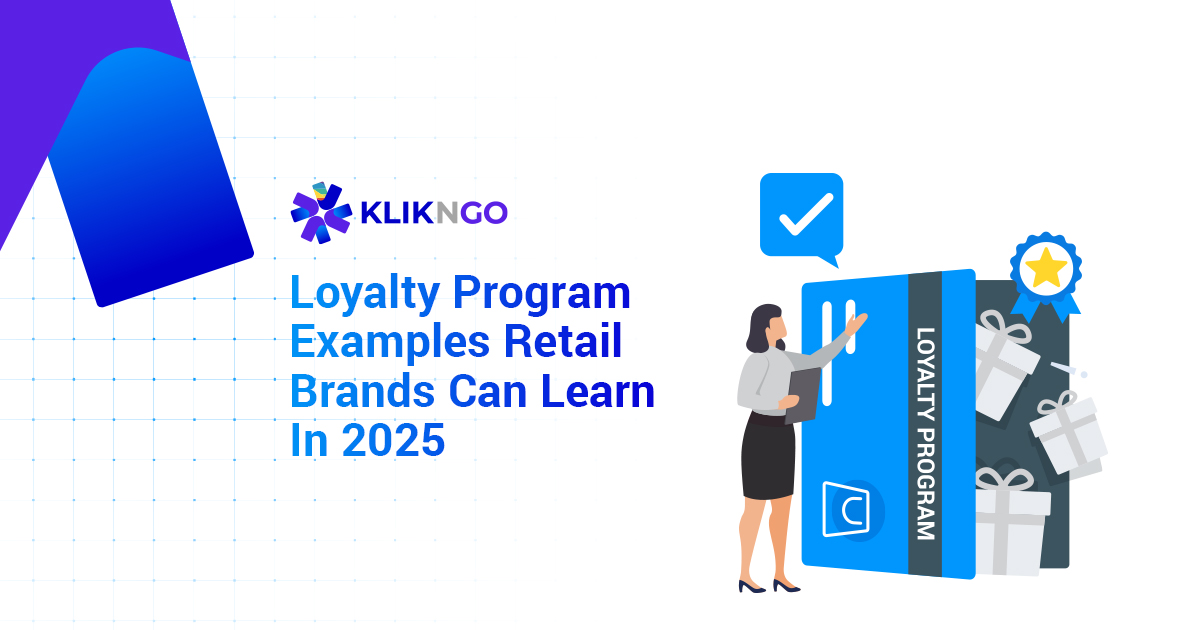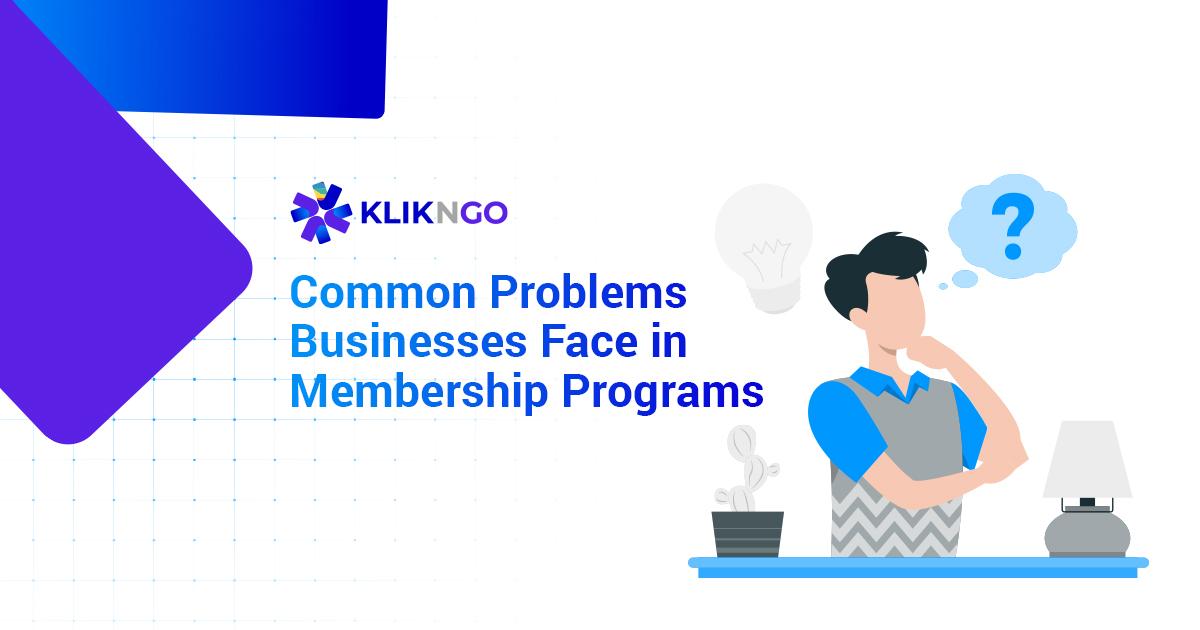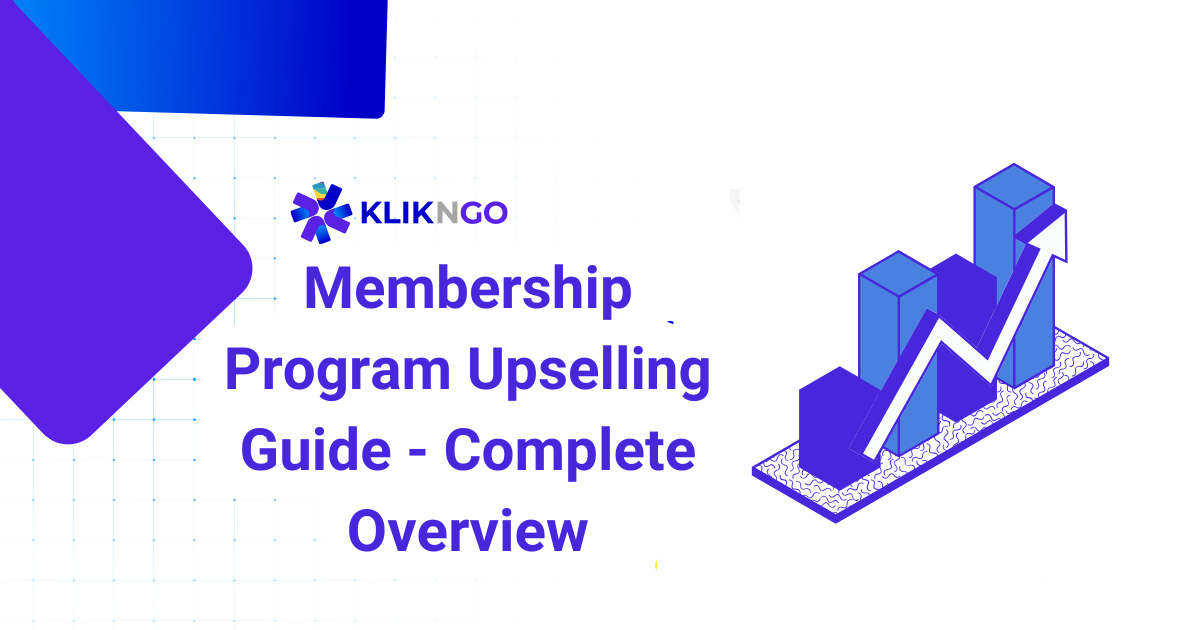Every business wants loyal customers, the kind who come back again and again. But repeat sales don’t happen just because someone liked your product. And they don’t happen because you offer a discount either.
In reality, repeat purchases are driven by something deeper: human psychology.
People return to brands that make them feel seen, valued, and motivated. Behind every second or third purchase is a set of subconscious reasons, reasons that smart businesses are starting to tap into using the right tools and strategies.
This is where loyalty programs come in. When designed with the right psychological principles in mind, loyalty systems can guide customer behavior in a natural, rewarding way, turning one-time buyers into long-term supporters.
In this article, we’ll explore 8 psychological triggers that drive repeat sales, and show you how to build them directly into your loyalty program system, especially if you’re using a platform like KlikNGo that supports behavior-driven loyalty design.
Why Understanding Psychology Beats Just Giving Discounts
A lot of loyalty programs focus on giving points, discounts, or cashback, and while those things can work, they’re not enough on their own.
The problem? Most customers don’t stay loyal just because they saved RM5. They stay because they feel a connection. Because something in the experience made them want to come back.
That “something” often comes down to how the program is designed to make them feel, and that’s where consumer psychology plays a big role.
When you understand what’s going on in your customer’s mind, you can build a loyalty system that speaks to their natural behaviors:
- The urge to complete goals
- The excitement of unexpected rewards
- The fear of losing status
- The pride in earning something the hard way
These aren’t just marketing tricks. They’re real behaviors backed by behavioral science, and when you align your loyalty program with them, you increase your chances of getting consistent repeat purchases and repeat sales.
In the next section, we’ll explore 8 psychology principles that help drive loyalty, and how you can use them inside your loyalty program to turn first-time buyers into long-term fans.
The 8 Psychology Principles That Drive Repeat Purchases
Behind every repeat sale, there’s a pattern, and it usually has nothing to do with price or product quality alone. What really drives repeat purchases is how the customer feels throughout their journey with your brand.
Let’s go through 8 psychological triggers that influence customer loyalty, consumer behavior, and repeat buying decisions. We’ll also look at how each one can be applied inside a loyalty program system to encourage ongoing engagement.
1. The “Head Start” Effect (Endowed Progress)
What it means:
The endowed progress effect is a psychological principle that shows people are more likely to complete a task when they feel they’ve already made some progress, even if that progress was artificially given.
In simple terms, if someone feels like they’ve already started something, they’re more motivated to finish it. This principle has been tested in multiple studies, including one where customers were given two versions of a coffee stamp card:
- One card required 8 stamps to get a free coffee.
- Another card required 10 stamps, but 2 stamps were already filled.
Even though both required the same number of purchases, customers who were given a “head start” were nearly twice as likely to complete the card.
This happens because progress, even if it’s small or symbolic, makes the goal feel closer and more achievable. It reduces the feeling of starting from scratch and activates the brain’s desire for completion.
Scenario:
A new customer signs up for your loyalty program system. Right after joining, they receive a welcome notification:
“You’ve earned 20 bonus points, only 80 more to unlock your first reward!”
Even though they haven’t bought anything yet, this small win makes them feel like they’re already “on their way.” They’re now more likely to return and make those next few purchases to reach the reward.
How to apply in your loyalty program:
Use your digital loyalty program (like KlikNGo) to:
- Pre-fill progress for new members (e.g. give 10 bonus points or 1 free stamp right after sign-up).
- Show visual indicators like “20% complete” or “1 out of 5 actions done” so customers feel progress is already in motion.
- Send follow-up reminders like “You’re already halfway to your first reward!” to maintain momentum.
KlikNGo allows you to automate this experience through onboarding rewards and visual dashboards, so your customers don’t start cold. Instead, they start with a small win that pushes them toward the next step in their journey.
By applying this principle, you’re not just rewarding, you’re engineering motivation for repeat purchases.
2. The “Almost There” Effect (Goal Gradient)
What it means:
The goal gradient effect is a psychological principle that explains why people become more motivated as they get closer to reaching a goal. It was first discovered in animal studies, where researchers noticed that rats ran faster as they approached food at the end of a maze. Later studies confirmed the same behavior in humans, we naturally pick up speed when we feel the “finish line” is near.
In consumer behavior, this means that the closer a customer feels to earning a reward, the more likely they are to take action to get it, whether that means making another purchase, visiting more often, or engaging with your brand.
Why? Because psychologically, the cost of the next action feels smaller when the reward is within reach. The effort feels “worth it”, and that urgency increases dramatically near the end of the journey.
Scenario:
A customer opens your loyalty app and sees:
“You’re just 2 points away from unlocking your free gift!”
They weren’t planning to make another purchase today, but now that the reward is just around the corner, they’re motivated to go the extra step. The satisfaction of completing the goal feels too close to ignore.
How to apply in your loyalty program:
You can apply the goal gradient effect by making progress highly visible and celebrating milestones as customers get closer to their rewards.
Using a loyalty program software like KlikNGo, here’s how you can do it:
- Display real-time progress in your customer dashboard (e.g. “80% to reward!” or “8/10 actions completed”).
- Send triggered emails or push notifications when customers are close to a reward (“Only 1 more visit to earn your free item!”).
- Offer mini bonuses to encourage the final push, such as “Double points if you complete your reward within the next 3 days.”
This kind of messaging taps into customer motivation psychology and helps convert passive users into active repeat buyers. Instead of losing momentum near the end, you’re helping customers sprint toward it.
Why it matters:
When used right, the goal gradient effect becomes a natural nudge, turning almost there into just done. For businesses, this means higher repeat sales, stronger customer retention, and a loyalty program that keeps people coming back for more.
3. The Surprise Effect (Variable Rewards)
What it means:
The variable reward effect comes from behavioral psychology and neuroscience. It refers to the idea that unexpected or unpredictable rewards are more emotionally impactful than predictable ones. This principle is why people enjoy things like slot machines, loot boxes in games, or random giveaways, the uncertainty builds anticipation, and the surprise delivers a dopamine boost.
In marketing and customer loyalty psychology, this means that when customers receive an unplanned gift or perk, it creates a stronger emotional response than if they were expecting it. That emotional high can lead to stronger brand memory and more repeat purchases.
Our brains are wired to enjoy the feeling of “maybe”, so when rewards aren’t guaranteed or come unexpectedly, we become more engaged, curious, and motivated to stick around to see what’s next.
Scenario:
A customer makes a regular purchase and receives a message:
“Surprise! You’ve unlocked a bonus reward, 30 extra points!”
They weren’t expecting anything, and that unexpected win sparks excitement. Now they wonder: will they get something next time too? That curiosity can fuel future visits.
How to apply in your loyalty program:
To activate the variable reward effect, mix predictable rewards (like fixed points or tiers) with occasional surprise bonuses. The key is to create emotional engagement through unpredictability.
Here’s how to do it:
- Add randomized rewards to your program (e.g. surprise points, mystery boxes, scratch-and-win vouchers).
- Celebrate unannounced milestones (“You’ve been with us for 30 days, here’s something special!”).
- Use gamified features like lucky spins, card draws, or random mini-games to make earning rewards feel playful and fun.
The surprise element doesn’t need to be huge, even small, unexpected gestures can trigger positive feelings that lead to stronger loyalty.
Why it matters:
Predictable systems may create routine, but surprise builds emotional memory. When customers are pleasantly surprised, they remember the feeling, and feelings drive repeat sales more than logic ever will.
4. Fear of Losing (Loss Aversion)
What it means:
Loss aversion is one of the most well-known principles in behavioral economics. It refers to the idea that people feel the pain of losing something more strongly than the pleasure of gaining something of the same value.
In other words, we hate losing RM20 more than we enjoy finding RM20.
Applied to consumer behavior, this means customers are more likely to take action to avoid losing something (like points, perks, or status) than to earn a new benefit. It’s a powerful motivator, especially in loyalty programs where members have something to protect.
This psychological trigger doesn’t rely on offering more rewards. Instead, it’s about showing the customer what they stand to lose if they don’t engage, and letting that natural discomfort push them to act.
Scenario:
A customer gets an email that says:
“Your current status will expire in 7 days. Make 1 more purchase to keep your benefits!”
Even if they weren’t planning to buy anything soon, the thought of losing their current perks nudges them to take action. They feel like they’ve earned it, and they don’t want to start from zero again.
How to apply in your loyalty program:
To apply loss aversion effectively, create scenarios where customers feel they have something to lose if they don’t stay active, but present it as a friendly nudge, not pressure.
Some tactics include:
- Use tier expiration reminders: “Maintain Gold status with 1 more purchase.”
- Add point expiration dates: “Your 120 points will expire soon.”
- Frame inactivity notices with urgency: “You’re close to losing access to exclusive rewards.”
- Let users track their “at-risk” perks through dashboards or emails.
This not only encourages action, but also increases the perceived value of what they already have.
Why it matters:
Loyalty isn’t just about giving, it’s also about what people don’t want to give up. When customers feel like they’ve earned something, they’ll work harder to keep it. This fear of missing out, when used respectfully, is a smart way to drive repeat purchases and long-term engagement.
5. The “I Made This” Effect (IKEA Effect)
What it means:
The IKEA Effect is a psychological phenomenon where people place higher value on things they helped create, even if the end result isn’t perfect. Named after the IKEA experience (where you build your own furniture), this effect shows that putting effort into something makes people feel more emotionally connected to it.
In the context of marketing and customer loyalty psychology, it means that when customers take part in shaping their experience, even in small ways, they develop a stronger sense of ownership. This leads to deeper emotional investment and increases the chances of repeat purchases.
People don’t just want rewards; they want involvement.
Scenario:
A customer joins your loyalty program and is asked to choose their preferred reward path:
“Would you like to work toward a free product, a discount, or early access to new items?”
By making that choice, they feel like the program is personalized, and because they’ve chosen their journey, they’re more likely to stick with it.
How to apply in your loyalty program:
To activate the IKEA Effect, give customers opportunities to customize or “build” their experience. Even simple forms of involvement can make a big difference.
Here’s how:
- Let customers choose their reward goals (e.g. points toward vouchers, freebies, or donations).
- Offer customizable loyalty tiers, where users unlock features based on preferences or past behavior.
- Allow members to create their own challenges or select tasks from a list (e.g. “complete any 3 of these 5 actions to earn a bonus”).
- Use quizzes, onboarding flows, or profile-building tools to help users “build” their loyalty journey.
The more customers interact with the system and make choices, the more they’ll value the outcomes, not because of what they get, but because they helped create it.
Why it matters:
In today’s crowded market, emotional connection matters more than ever. The IKEA Effect helps transform a generic loyalty program into a personal journey, where customers don’t just earn rewards, they feel like they own them.
That ownership leads to stronger loyalty, more engagement, and ultimately, more repeat sales.
6. Loyalty as Identity (Self-Identity Loop)
What it means:
Humans like their actions to match how they see themselves. This is called the self-identity loop. Once someone believes “I’m a loyal customer of Brand X,” their future choices tend to reinforce that identity. They’ll keep buying from Brand X because doing anything else would feel inconsistent.
Why it works: people seek psychological consistency. Acting in line with a chosen identity feels good; acting against it creates mental discomfort. Brands that help customers adopt a positive identity (“VIP member,” “insider,” “champion supporter”) lock in that internal motivation.
Scenario:
A customer has reached a premium tier in your loyalty program. They receive messages like:
“Thanks for being a top-tier member, you’re part of our elite circle.”
Now they don’t just see themselves as someone who buys from you. They see themselves as a recognised, valued part of your brand. And because that identity matters to them, they’ll continue the behavior, making more repeat purchases to maintain that feeling.
How to apply in your loyalty program:
The goal here is to build identity into your program, so customers aren’t just collecting points, they’re building a personal connection to their role as a loyal customer.
Here’s how:
- Use tier naming that sounds meaningful (e.g. “Explorer”, “Insider”, “Champion”), not just Bronze/Silver/Gold.
- Reinforce identity through communication: “As one of our most loyal members…”
- Give exclusive experiences or badges that customers can earn and show off.
- Highlight member anniversaries or milestones (“1 Year as a Loyal Member!”).
These small touches make customers feel seen and significant, and people love sticking with brands that acknowledge them beyond transactions.
Why it matters:
When loyalty becomes part of someone’s identity, you don’t have to keep pushing them to buy. They’ll come back on their own, because it feels natural, and it reinforces who they believe they are.
In short, identity-driven loyalty leads to repeat sales with far less effort.
7. The Need to Finish (Completion Bias)
What it means:
Completion bias is the psychological tendency where people feel a strong internal drive to finish tasks they’ve already started, even when there’s no actual reward for doing so.
Why does this happen? Our brains are wired to seek closure. An unfinished task creates a kind of mental itch, it lingers in the background and feels incomplete. Finishing something gives us a small dopamine reward and a sense of satisfaction. That’s why we like ticking off checklists, finishing a video series, or even collecting stamps, it just feels good to be done.
When applied to consumer behavior, this means that once a customer starts a loyalty journey, like a challenge, punch card, or progress bar, they’re far more likely to come back and complete it, even if the reward isn’t massive.
Scenario:
A customer starts a “5-day streak” challenge to unlock a small bonus. After day 3, they miss a day, and the streak resets. Now they’re more likely to come back next time and push through all 5 days, because they hate leaving it incomplete again.
How to apply in your loyalty program:
You can apply completion bias in small but effective ways by creating tasks and reward structures that feel satisfying to finish.
Here’s how:
- Use progress bars or step-based goals (e.g. “You’ve completed 3 of 5 steps to your next reward!”).
- Offer mini-challenges: “Buy from us once a week for 4 weeks to unlock a bonus.”
- Include mission-based engagement like “Try 3 different categories to complete this badge.”
- Let customers track their journey visually (not just total points, but milestones and actions completed).
The key is to create the feeling of a journey, something that feels incomplete until they take that next action. Once someone has started down the path, completion bias will keep pulling them forward.
Why it matters:
You don’t need to force customers to buy more. Instead, give them something to finish, and their natural psychology will do the rest. That’s how completion bias drives consistent repeat sales in a loyalty program.
8. Earned Rewards Feel Better (Effort Justification)
What it means:
Effort justification is a concept from psychology that explains why people tend to value something more if they had to work hard to get it. This behavior is tied to cognitive dissonance, when we put in effort, our brain wants to believe the outcome is worth it, or else we feel uncomfortable.
In simpler terms: if I spent time or energy earning a reward, it must be valuable, otherwise, why did I work for it?
This is especially powerful in loyalty program psychology. When customers feel like they’ve earned something, not just received it for free, they place more meaning and pride in that reward. That emotional satisfaction strengthens their bond with your brand, leading to more repeat purchases.
Scenario:
A customer completes a three-part loyalty challenge:
- Try a new product
- Leave a review
- Refer a friend
Once they finish it, they unlock a higher-tier reward. Because it wasn’t handed to them easily, the reward feels more valuable, and they feel more invested in your brand because of the effort they put in.
How to apply in your loyalty program:
To activate effort justification, include activities in your loyalty journey that go beyond spending money. This creates a sense of achievement that deepens customer engagement.
Here are some ways to apply it:
- Design multi-step tasks or missions (e.g. “Complete these 3 actions to unlock a bonus”).
- Include non-transactional actions like writing reviews, answering a quiz, or sharing content.
- Offer exclusive rewards that can’t be bought, only earned through specific challenges.
- Add badges or tiers for effort-based behavior (not just total spending).
You don’t need to make your program difficult, just make the reward feel earned. A little friction can lead to more meaning, which in turn leads to stronger emotional loyalty and more frequent returns.
Why it matters:
Not all rewards are equal. A freebie handed out with no effort might be used and forgotten. But a reward that took some action to earn? That sticks. It’s how you turn a loyalty program from “just another promo” into something that genuinely builds customer loyalty and encourages repeat sales over time.
Final Takeaways, A Smarter Way to Build Loyalty
Loyalty isn’t just about points. It’s about how your brand connects with people, how you make them feel understood, motivated, and valued. That’s what leads to repeat purchases, not just short-term wins.
The good news? You don’t need to guess what works. Human psychology already shows us the way.
Let’s recap the 8 principles:
- Endowed Progress – Give people a sense of progress right from the start
- Goal Gradient – Show them they’re getting closer to something meaningful
- Variable Rewards – Add small surprises that spark joy
- Loss Aversion – Remind them gently of what they might lose
- IKEA Effect – Let them take part in shaping their experience
- Self-Identity Loop – Help them feel proud to be part of your brand
- Completion Bias – Give them something worth finishing
- Effort Justification – Make rewards feel earned, not just given
These aren’t marketing hacks, they’re just natural human behaviors that, when reflected in your loyalty program, make the whole experience more personal and memorable.
If you’re exploring how to bring these ideas to life in a real system, platforms like KlikNGo make it easier to build loyalty programs that align with how people actually think and behave.
Rule 4: Gamified Experiences Keep Customers Engaged
The traditional points-for-purchases model isn’t enough anymore. In 2025, loyalty programs that feel like games are outperforming those that just feel like spreadsheets. Gamification taps into psychology, it gives users something to play for, not just pay for.
Interactive elements like progress bars, surprise rewards, achievement badges, and challenges create a sense of momentum. They make loyalty fun, not forgettable.
Example Scenario:
A fast-casual restaurant launches a “3-Day Challenge”: customers who order three times in a row unlock a free drink or a mystery reward. Instead of waiting weeks to reach a reward threshold, customers stay engaged daily, eager to see what’s next.
These game-like experiences increase frequency, encourage exploration, and deepen emotional investment.
Let’s use KlikNGo as a reference:
KlikNGo’s loyalty program software allows brands to build flexible challenges, streaks, and surprise-based rewards without code. You could create a “weekly mission,” offer tier-based unlockables, or run flash point boosters triggered by behavior, all within one dashboard.
This makes it easy for businesses to gamify the customer journey without building a custom app from scratch.
Why Gamified Experiences Matters?
Gamification = Motivation in Motion.
- Members who participate in gamified programs make more frequent purchases
- Gamified loyalty features increase engagement by up to 47%
- Customers feel a stronger sense of accomplishment, leading to higher retention and shareability
Action Step:
Audit your current program. Are customers passively earning, or are they actively playing? Consider introducing low-effort gamified elements like “Spin & Win,” bonus point weekends, or streak rewards to increase interaction.
Rule 5: Privacy-First Loyalty Wins Long-Term Trust
In a world shaped by GDPR, cookie bans, and growing data sensitivity, customers are more cautious than ever about who they trust with their information. Loyalty programs are no longer judged just by rewards, but by how respectfully they collect and use data.
In 2025, brands that prioritize consent, transparency, and control in their loyalty program systems will win. Those that don’t? Risk being abandoned, no matter how generous the perks.
Example Scenario:
A customer lands on your site and sees a loyalty signup form. Instead of a long wall of legal text, they’re greeted with a simple toggle: “I want to receive personalized offers based on what I browse.” Below that? A quick FAQ on how their data is stored, and how they can opt out anytime. No tricks. No hidden tracking.
The customer signs up, not just because of the points, but because they feel respected.
Why Privacy-First Loyalty Matters:
Trust Is the New Loyalty Currency
- According to Accenture, 83% of consumers are willing to share data, but only if they feel it’s used responsibly
- Brands that are clear about their data collection practices see higher signup rates and better engagement
- Privacy-first programs reduce churn and increase lifetime value because users feel safe and in control
How to Apply It:
- Give users clear opt-ins and permission settings during loyalty signup
- Use consent-based personalization: don’t assume, ask
- Let users view, manage, or delete their data from their loyalty profile easily
- Avoid “dark patterns” (e.g., forcing opt-ins for rewards)
Transparent practices lead to stronger emotional loyalty and better customer relationships, especially as expectations rise.
Conclusion: Loyalty in 2025 Is About Respect, Relevance, and Relationship
Growing a business isn’t just about getting more traffic, it’s about using the right strategies at the right time.
- Referral programs help you bring in new customers through trust.
- Retargeting gives you a second chance to convert those who leave.
- Loyalty program systems keep your customers coming back and spending more.
Used together, they form a complete customer retention and engagement strategy—helping you acquire, convert, and retain customers all within a single ecosystem.
And if you’re looking for a way to manage all of this without the complexity, KlikNGo loyalty program system makes it easy. From building a loyalty program to tracking referrals and automating rewards, KlikNGo helps you turn one-time customers into loyal advocates, without the manual work.
Start small, think long-term, and let your systems do the heavy lifting.
